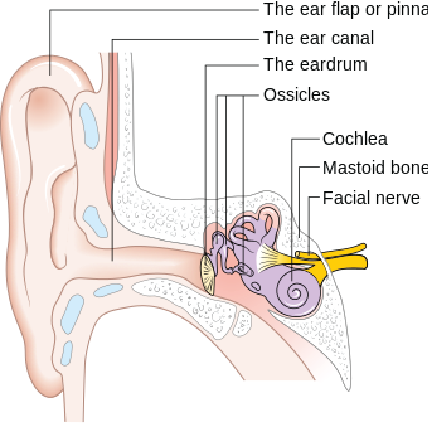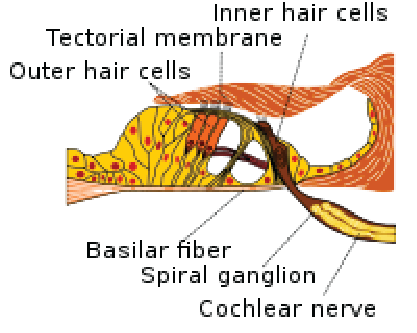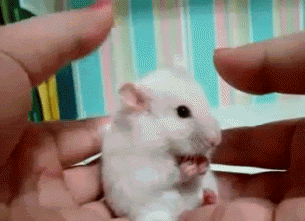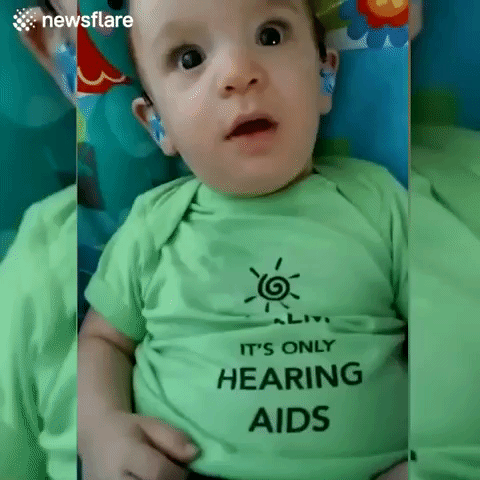Gene Therapy: Hearing Restored In Deaf Mice Using A Virus To Deliver A Functional Gene
What would you do if you had a genetic disorder that resulted in you being both Deaf and Blind? This is the problem faced by those who have what is known as Usher Syndrome.

Usher syndrome is a genetic disorder where a mutation in any one of at least 10 genes can lead to the combination of deafness and blindness, the onset of which is dependent upon which gene gets mutated. [1]. As a result, this disorder has three specific subtypes (I, II, and III) with the most severe being type I. People with type I usher syndrome are born blind, and progressively lose their sight as they grow older, usually losing it during childhood. As a whole, usher syndrome is quite common, affecting 1:25000 people in the United States alone. [2] Around the world upwards of 125 million people suffer with hearing loss due to genetic mutations.
Researchers sought to utilize new gene therapy technologies to see whether or not they could treat the genetic basis for this disease in an article recently published in Nature: Biotechnology titled "Gene therapy restores auditory and vestibular function in a mouse model of Usher syndrome type 1c."
Research Focus
As I mentioned above type I Usher syndrome is the very worst, people with it are born deaf and will never recover the ability to hear or gain the ability to speak. There are six genes associated with this type of usher syndrome and in this article the authors focused on the gene USH1C. This gene is involved in the formation of sensory hair bundles in the inner ear.
The Ear
I am certain you are familiar with the ear, but lets take a brief moment to look at a diagram of one, so you can orient yourself as to where these hair bundles are located.

Looking at the image above we must travel into the ear, past the ear drum into a part of the inner ear called the cochlea. The cochlea contains a section called the organ of corti, which is also known as the microphone of the body.[5]

The entirety of the cochlea is filled with a fluid that allows for vibrations to pass through it. These vibrations then move tini hairs (seen in the image above labeled outer and inner hairs). You can also see that these hairs are attached to a nerve cell, and as you likely suspect when they move, they produce electric signals in the nerve. It is the movement of these hairs that allows us (in part) to hear, with out them organized into their appropriate orientation, we are deaf.
Back to USH1C
So the real reason the authors chose to study this particular gene is there is a working mouse model. By that I mean, if USH1C from a mouse becomes mutated, the mouse exhibits the same deafness phenotype that is observed in humans. Using this model, the authors wanted to use a virus to put a non mutated version of USH1C back into the cells of the mice and see whether or not they could recover hearing.

Yes Mr. Mouse, A Virus.
Specifically an adenovirus (AAV), with the name Anc80L65 ( gotta love those beautiful virus names... ). Into this synthetic virus the authors added a working version (actually two) of the USH1C gene. These viruses were then allowed to infect the mice (they injected the virus). Upon infection the virus would induce expression of the protein created by the gene (it's called harmonin).
AAV Infection Restores Proper Hair Morphology (shape)
Normally the inner ear hairs that allow for hearing are shaped in a V pattern (see the figure below for what this looks like), however in those mice with a mutation (a glycine in the harmonin protein is switched to an alanine), result in the hairs losing their organization.

What they saw is that the virus supplied gene was able to restore the hairs to the proper orientation in the deaf mice.
Okay... but how do you know if a mouse is hearing something?
You can't exactly ask them right? The answer to that is to directly monitor their brain waves. They generated noises of a specific frequencies and volumes and monitored the brains of the mice not recieving the viral gene therapy, and those having recieved the therapy (and with the properly structured inner ear hairs). They found no brain response to the sounds for the un-treated mice (not shockingly.. they are deaf afterall) but a normal brain wave response for the mice that had received the treatment!
TL;DR/Conclusion
An adenoviral vector was utilized to re-introduce expression of a non mutated version of the gene USH1C in mice. Mutation of this gene causes Usher syndrome and leaves the mice deaf. Treatment with the adenovirus during early stages of development resulted in a restoration in the mouse's ability to hear.
A gene therapy technique reversed genetic derived hearing loss! This was a very cool paper and a fascinating result!

Sources
- http://www.nature.com/nbt/journal/vaop/ncurrent/full/nbt.3801.html
- https://ghr.nlm.nih.gov/condition/usher-syndrome#genes
- http://www.sciencedirect.com/science/article/pii/0021968183901479
- http://www.uniprot.org/uniprot/Q9Y6N9
- http://hyperphysics.phy-astr.gsu.edu/hbase/Sound/corti.html
- http://www.genetherapynet.com/viral-vector/adenoviruses.html
- http://journals.plos.org/plosone/article?id=10.1371/journal.pone.0030577
Any Non Cited Images Are From Pixabay.com and Available Under A Creative Commons License
Any Gifs Are From Giphy.com and Are Also Available for Use Under A Creative Commons Licence
If you like my work, please consider giving me a follow: @justtryme90. I am a PhD holding biochemist with a love for science. My future science blog posts will cover a range of topics in the biology/chemistry fields.
Thank you for your continued support of my work! I appreciate all those who follow me (and those who don't too).
Good sharing, increase my knowledge.
I'm glad you enjoyed it. Thanks for reading and for your comment!
I guess we are still far from tests on humans, aren't we? This however looks promising!
I don't know how far we are away to be honest, getting clinical trials rolling is just such a slow process. Indeed it looks really good in this model, but I would like to see more work done showing no side effects from the adenoviral infection.
All that aside, the viral strains used in this sort of work already infect most humans, so my concern is likely overblown.
There is just so much encouraging research being done right now, I think a lot of positive progress is going to be made over the next decade or so to drastically improve peoples lives.
Indeed, we need to be really careful to avoid the "one step forward, three steps backwards" and the lose of confidence in the methods due to some sloppiness.
When genes go bad... viruses to the rescue! :P I saw this the other day. Hearing down to a 25db whisper is pretty good.
It's especially good considering the alternative of being deaf. I still have some reservations about viral delivery, but I think that those will be addressed as work continues.
Did Helen Keller have Usher Syndrome, or was her malady different?
Nope, she had meningitis as a child and lost her hearing and sight due to complications of this infection.
Read Here
Okay, thanks.
You're welcome. Thanks for reading :)